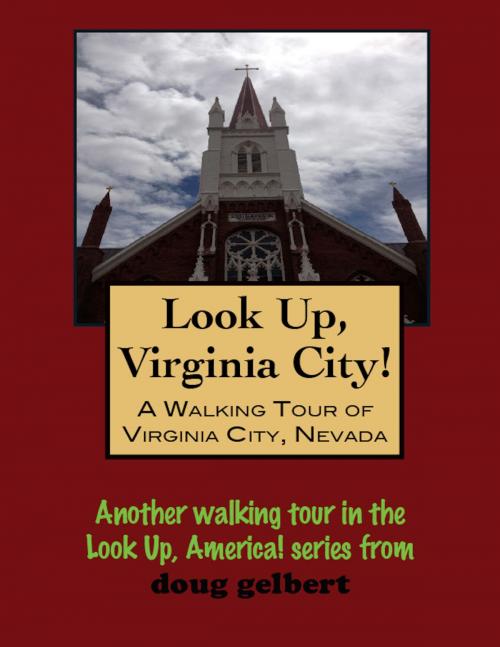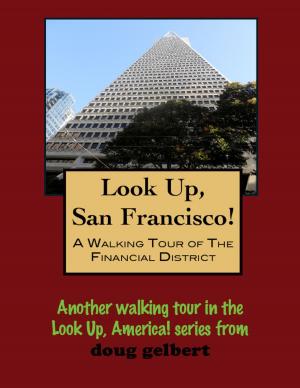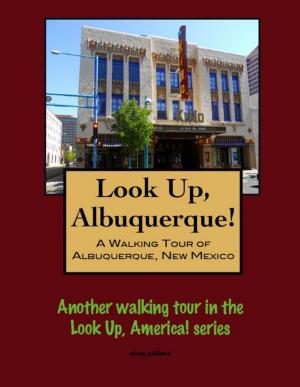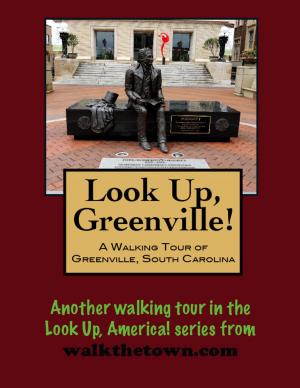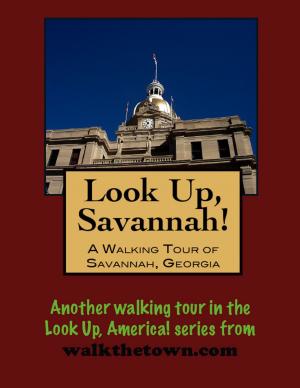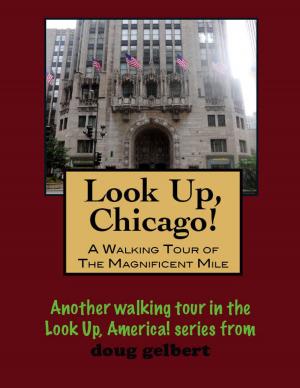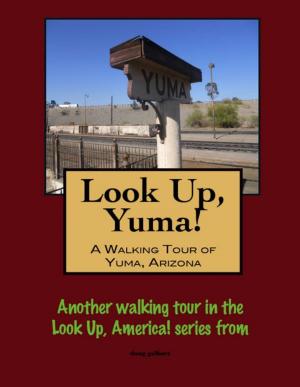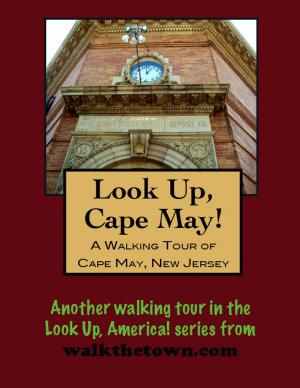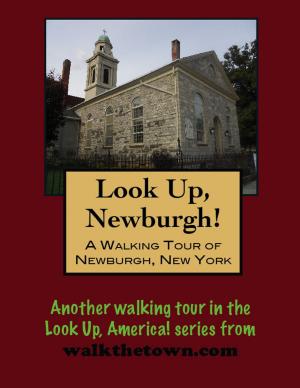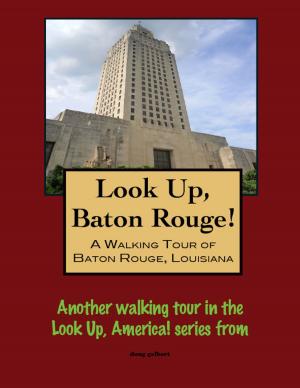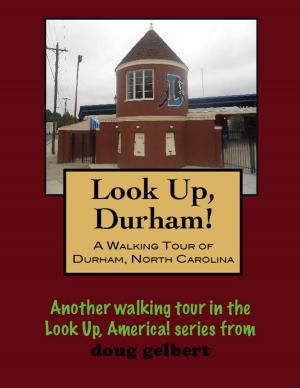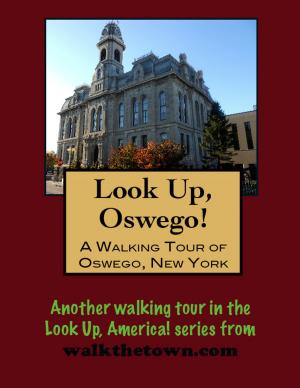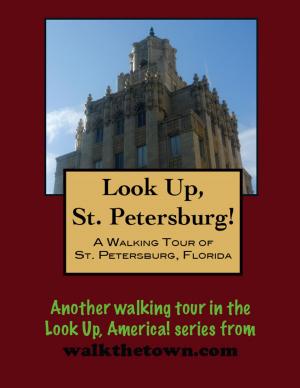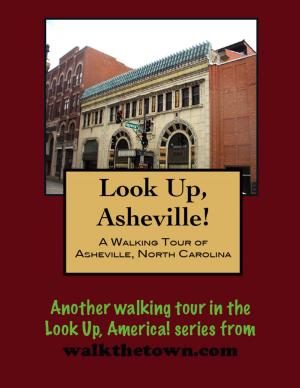Look Up, Virginia City! A Walking Tour of Virginia City, Nevada
Nonfiction, Travel, United States, West, History, Americas| Author: | Doug Gelbert | ISBN: | 9781476197395 |
| Publisher: | Doug Gelbert | Publication: | June 22, 2012 |
| Imprint: | Smashwords Edition | Language: | English |
| Author: | Doug Gelbert |
| ISBN: | 9781476197395 |
| Publisher: | Doug Gelbert |
| Publication: | June 22, 2012 |
| Imprint: | Smashwords Edition |
| Language: | English |
There is no better way to see America than on foot. And there is no better way to appreciate what you are looking at than with a walking tour. Whether you are preparing for a road trip or just out to look at your own town in a new way, a downloadable walking tour is ready to explore when you are.
Each walking tour describes historical and architectural landmarks and provides pictures to help out when those pesky street addresses are missing. Every tour also includes a quick primer on identifying architectural styles seen on American streets.
Tradition holds that Virginia City, one of the oldest established communities in Nevada, took its name from James Finney who was known as “Old Virginy.” Finney wasn’t even his name - he supposedly changed it from Fennimore after killing a man in his home state of Virginia. Virginia City sprang up virtually overnight after the discovery of the Comstock Lode, the first major silver strike in the United States, was revealed in 1859.
The silver had been unearthed accidentally a couple of years earlier by gold miners who were frustrated by heavy blue-black material that was clogging their gold-mining apparatus. Henry Tompkins Paige Comstock was left in charge of the prospecting cabin while the miners set out for San Francisco with samples to raise investors. They never made it over the Sierra Nevada mountains and Comstock claimed the cabin and land. But being an uneducated man he never really knew what he had. He eventually sold his mining shares for $11,000 and lost the money in business. In 1870 while prospecting in Montana Comstock put a revolver to his head and killed himself.
There were far more losers than winners in the rush to the Comstock but the winners won very big at “the richest place on earth.” There was somewhere between 15,000 and 30,000 residents during the height of the boomtown, who could keep count, and Virginia City was the most important town in the West between Denver and San Francisco. But it was all over almost as soon as it began. The Comstock Lode was playing out by the end of the 1870s and the mines were closed before the dawn of the 20th century.
Disappearing silver was not the only calamity to befall Virginia City in the 1870s. There had been four destructive fires since the town was built in 1859 but a fifth, that began early on the morning of October 26, 1875 when a coal oil lamp was knocked over in a boarding house on A Street, dwarfed them all. When strong winds finished whipping the flames around town 33 blocks of structures were leveled, including most of the town’s business district.
The population dipped into the hundreds and the town slumbered for the better part of 70 years but never quite vanished from the map. It was, of all things, television that jolted Virginia City back to life with the popularity of the western Bonanza in the 1960s. Although the Cartwrights were ranchers and not miners curious viewers began showing up to see that town near the Ponderosa Ranch where Little Joe was always getting in trouble in - Virginia City.
Many of the old buildings and an authentic Wild West flavor were still there to greet the visitors. Today most of the development centers on C Street with plenty of historic saloons sprinkled in among the souvenir purveyors. The steep hills on either side of C Street deflect many explorations but our walking tour will go above and below C Street before we are through. And if that isn’t a hardy enough route, we will begin outside of the town center, down south aways, where the most tangible evidence of Virginia City’s reign as the “richest place on earth” still stands...
There is no better way to see America than on foot. And there is no better way to appreciate what you are looking at than with a walking tour. Whether you are preparing for a road trip or just out to look at your own town in a new way, a downloadable walking tour is ready to explore when you are.
Each walking tour describes historical and architectural landmarks and provides pictures to help out when those pesky street addresses are missing. Every tour also includes a quick primer on identifying architectural styles seen on American streets.
Tradition holds that Virginia City, one of the oldest established communities in Nevada, took its name from James Finney who was known as “Old Virginy.” Finney wasn’t even his name - he supposedly changed it from Fennimore after killing a man in his home state of Virginia. Virginia City sprang up virtually overnight after the discovery of the Comstock Lode, the first major silver strike in the United States, was revealed in 1859.
The silver had been unearthed accidentally a couple of years earlier by gold miners who were frustrated by heavy blue-black material that was clogging their gold-mining apparatus. Henry Tompkins Paige Comstock was left in charge of the prospecting cabin while the miners set out for San Francisco with samples to raise investors. They never made it over the Sierra Nevada mountains and Comstock claimed the cabin and land. But being an uneducated man he never really knew what he had. He eventually sold his mining shares for $11,000 and lost the money in business. In 1870 while prospecting in Montana Comstock put a revolver to his head and killed himself.
There were far more losers than winners in the rush to the Comstock but the winners won very big at “the richest place on earth.” There was somewhere between 15,000 and 30,000 residents during the height of the boomtown, who could keep count, and Virginia City was the most important town in the West between Denver and San Francisco. But it was all over almost as soon as it began. The Comstock Lode was playing out by the end of the 1870s and the mines were closed before the dawn of the 20th century.
Disappearing silver was not the only calamity to befall Virginia City in the 1870s. There had been four destructive fires since the town was built in 1859 but a fifth, that began early on the morning of October 26, 1875 when a coal oil lamp was knocked over in a boarding house on A Street, dwarfed them all. When strong winds finished whipping the flames around town 33 blocks of structures were leveled, including most of the town’s business district.
The population dipped into the hundreds and the town slumbered for the better part of 70 years but never quite vanished from the map. It was, of all things, television that jolted Virginia City back to life with the popularity of the western Bonanza in the 1960s. Although the Cartwrights were ranchers and not miners curious viewers began showing up to see that town near the Ponderosa Ranch where Little Joe was always getting in trouble in - Virginia City.
Many of the old buildings and an authentic Wild West flavor were still there to greet the visitors. Today most of the development centers on C Street with plenty of historic saloons sprinkled in among the souvenir purveyors. The steep hills on either side of C Street deflect many explorations but our walking tour will go above and below C Street before we are through. And if that isn’t a hardy enough route, we will begin outside of the town center, down south aways, where the most tangible evidence of Virginia City’s reign as the “richest place on earth” still stands...
